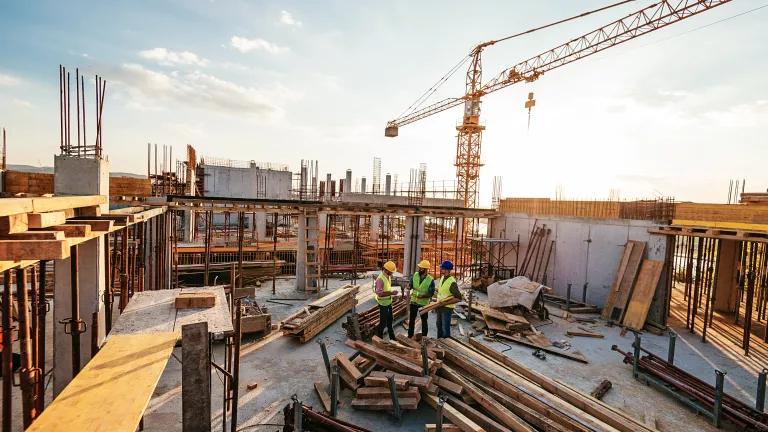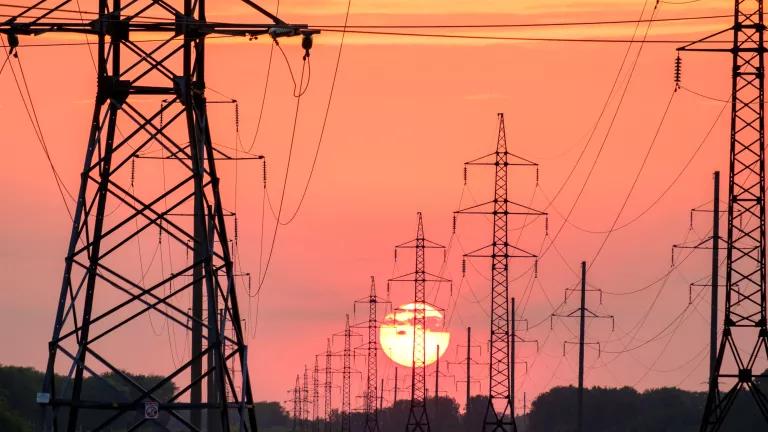There are many reasons why California needs to start using water more efficiently, and do so quickly. Excessive water demand is threatening the most important estuary on the West Coast – the Bay-Delta ecosystem just east of San Francisco. If you live in Southern California, there is a good chance that the water flowing from your faucet and filling your toilet originated in the Bay-Delta or the Colorado River, or both! Together the Bay-Delta and Colorado River provide SoCal with about half of our water demand and in both cases, the diverted water is pumped up hill and over long distances, using huge amounts of energy. Climate change will cause water supplies to be more variable and less reliable making more efficient use of water an increasingly important issue.
So it was welcome news when, in 2009, Governor Schwarzenegger signed the landmark Water Conservation Act which requires that urban water demand be reduced by 20% by the year 2020 (which is why the law is also referred to as “20x2020”). The Act also established a new and challenging set of planning requirements for California’s drinking water utilities - urban water suppliers must calculate their baseline water use and set water use targets for the years 2015 and 2020 based on guidance from the Department of Water Resources (DWR). NRDC reviewed California’s progress towards meeting the goals of 20x2020, and below are some of our findings.
In February 2010, DWR set the statewide baseline for urban water use at 192 gallons per capita per day (gpcd) based on 2005 water use and population – that's the equivalent of leaving your bathroom faucet on full blast for 2+ hours, or filling a standard bathtub about 5 times. A 20% reduction from this baseline yields a 2020 target water use of 154 gpcd. In March 2012, DWR summarized the baselines and targets computed by urban water suppliers in testimony to a legislative committee as follows:
- 198 gpcd – baseline water use reported in the plans submitted to DWR
- 166 gpcd –2020 target water use reported in submitted plans
- 158 gpcd – 20% reduction based on average reported baseline in submitted plans
In graph form, it looks like this:
What these figures mean is that we are NOT on track to meet our water goal of 20 percent reduction by 2020.Compared with the original DWR statewide baseline water use of 192 gpcd, California urban water suppliers are actually targeting a per capita water use reduction of just 13.5%, a significant shortfall from the mandated 20%. If the comparison is made with the population-weighted average baseline water use reported in the submitted plans, the reduction is still only 16%. So a significant disconnect has developed between the statewide goal set by statute and the sum of the individual goals submitted by water suppliers. Here’s why:
- Only ONE of the four methods water suppliers are allowed to use to calculate 2020 target water use results in a 20% reduction from the baseline. The other three offer pathways that allow some water suppliers to comply with the Act by setting a 2020 target significantly less stringent target than 20%. In fact, the data show that only 57% of urban water suppliers chose to use Method 1, the straight 20% reduction.
- Water suppliers are taking advantage of loopholes in the law. At least 12 suppliers reported a 2020 target above their baseline, i.e. they can increase water usage substantially and still be in compliance with the Act. How can that be? Well, the Act doesn’t address target setting for water suppliers whose 5-year baseline water use is less than 100 gpcd. The statute provides four methods for calculating 2020 target water use, with the added requirement that the selected method must result in at least a 5-percent reduction from a 5-year baseline and water suppliers with a 5-year baseline at or below 100 gpcd, however, are exempt from the 5% minimum reduction requirement. DWR attempted to address this issue by requiring that a water supplier invoking this exemption must “maintain and document water use at or below 100 gpcd” in 2015 and 2020. Unfortunately, water suppliers that qualify for the exemption are using the ambiguity in the law to set the least stringent 2020 target possible. I disagree, and so does DWR staff who are looking at ways to better deal with this loophole before the 2015 plans are due.
The Water Conservation Act and DWR’s Guidebook provide a lot of good guidance, but there are still some unanswered questions. How will compliance be determined? Will DWR use the baseline and target values from the 20x2020 Water Conservation Plan or the data submitted by the urban water suppliers? If we use the submitted data, is anyone checking it to make sure it’s right? We reviewed 9 plans last year and found significant issues with the baseline and target calculations in 2 of the plans and a lack of required documentation in 5 of the plans.
NRDC sent a letter to DWR summarizing our concerns. Later this fall, DWR will restart its urban water stakeholder committee for the purpose of addressing the two legislative requirements that must be considered for the 2015 plans and to address the concerns identified in our letter. Specifically, DWR will use the stakeholder committee to address the following issues:
- Requiring more recent census datalike the use of 2010 Census in revised baseline calculations reported in 2015 UWMPs
- Determining the appropriate 2015 and 2020 targetsfor a supplier claiming a baseline at or below 100 gpcd
- Requiring better documentation of baseline and target calculations in 2015 and 2020
- Discussing the difference between reported targets and 20% statewide goal
- Estimating statewide per capita water use for the years between 2010 and 2015
One last thought. It appears that DWR plans to address many of these issues following its review of 2015 data contained in plans scheduled for submission in 2016, which might be too late. We are likely to see an even greater shortfall from the 20x2020 goal when urban water suppliers update their baseline calculations using 2010 Census data. Assuming the 2015 plans will be submitted to DWR in July 2016 to allow suppliers to report their 2015 per capita water use, the timeline for enacting and new policy for California to meet the 20x2020 requirement might look like this:
With three years, at most, to implement any new water-saving policies to make up a shortfall detected in 2016, it is not likely we’ll make it to 20% by the end of 2020. We’ve already identified this shortfall and we stll have 8 years to act and meet a full 20 percent reduction by 2020. It is possible to meet this goal, but we must act now.



